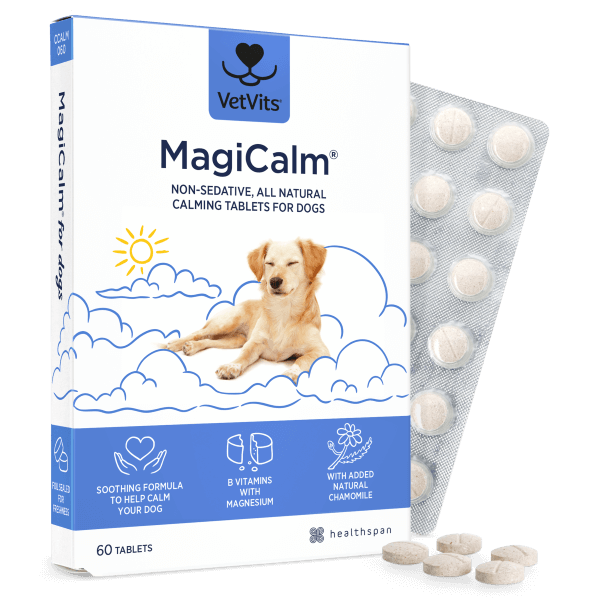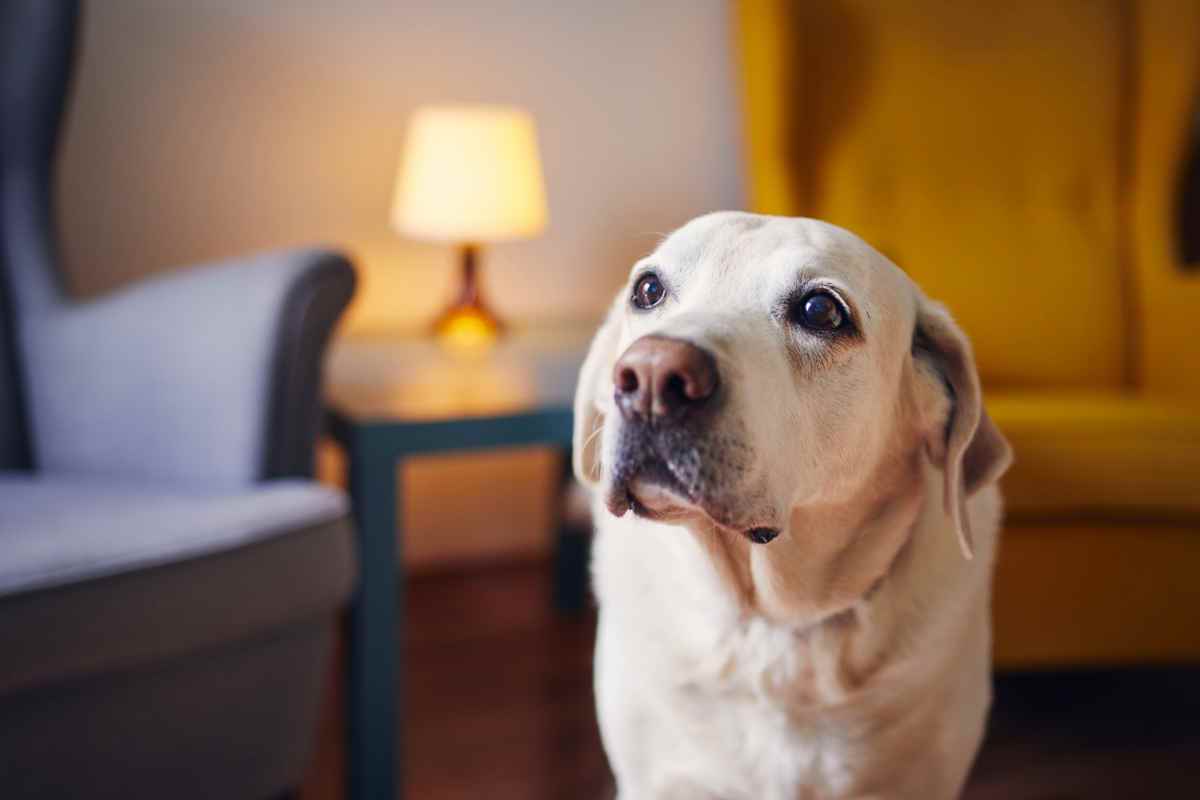Whether they're for New Year's Eve, Diwali, Bonfire Night or a birthday party, fireworks can make life a misery for your dog – but there are lots of things you can do to help.
🕒 4 min read
Loud explosions, sudden flashes of light... It's not difficult to understand why so many dogs are scared of fireworks. Depending on how much time you have to help prepare your dog (as well as their temperament and normal routine), here's how to keep your dog calm.
Before the event
Create a 'fireworks den' or safe place
This needs to be somewhere away from windows and external doors, and should be set up at least two weeks before the event, so your pet has time to get used to it. A crate is perfect, or drape a blanket over a table or chair and fill the area with your pet's favourite toys, blankets and a piece of your clothing. Let them use the area as they please, but reward them when they do.
Try sound therapy
The idea of sound therapy is that by gradually exposing your dog to firework sounds in a controlled manner, they will eventually stop being afraid – but it can take a number of months.
Begin by playing firework sounds very quietly (YouTube has a number of videos) for 15 minutes a day, at a level that doesn't cause your dog any stress. Slowly increase the volume each time, stopping and going back a few steps if your dog shows signs of anxiety. Be patient and do not rush the process by turning up the volume too quickly. Eventually your dog should be calm and comfortable even with the firework sounds playing at a loud volume.

MagiCalm
For naturally calmer and less anxious dogs
- Magnesium to lower muscle tension, B vitamins for psychological wellbeing and relaxing chamomile
- Beef flavour enhanced with brewer's yeast
- Can help to calm your dog in stressful situations
On the day
Even if you've left things a little late, there are still things you can do in the hours before the fireworks begin.
Try to tire out your dog
Ensure your dog has had a busy day, so they're tired by the time the fireworks start. You can also feed them a stodgy, high-carb meal in the late afternoon to help them feel sleepy later on (which is also helpful if they're likely to become too anxious to eat).
Create other noises in the house
Turn on the radio or the TV – or even put a load of washing in the machine or tumble-dryer – to create extra noise in the house (as long as your dog is used to these sounds). Classical music is a great choice for many dogs, as it seems to have a calming effect.
It's also a good idea to draw the curtains, but leave the lights on indoors so your dog isn't startled by flashes.

Give your dog comfort and reassurance if they want it, but don't disturb them if they retreat.
Give your dog space and choice
When the fireworks start, your dog may run straight for their fireworks den, or they may completely ignore it. Whatever they choose is fine; simply give them comfort and reassurance if they look like they need it, but don't disturb them if they retreat. Try to avoid repeatedly checking on them, as this will reinforce the notion that something is wrong. Simply make sure they have a bowl of water nearby (as worried dogs tend to pant more) and behave as normally as possible.
Above all, it's a good idea to remind everyone in the house that they need to be careful when opening and closing any external doors.
Keep your dog calm
If your dog does come to you, try teaching them some tricks, give them a long-lasting chew or toy, or play scent-based games, which are particularly good at calming dogs down.
The power of touch can also be hugely calming, so be sure to give them plenty of gentle physical contact. Instead of a ruffling motion, try slow and soothing gentle strokes, which will help boost their oxytocin levels and override their 'fight or flight' response. Many dogs also like it when you stroke their ears from the base to the tip.
Although we wouldn't recommend dog sedatives on Bonfire Night (or in most other scenarios), you can try giving them a natural calming supplement to help them feel less anxious and improve their wellbeing.







